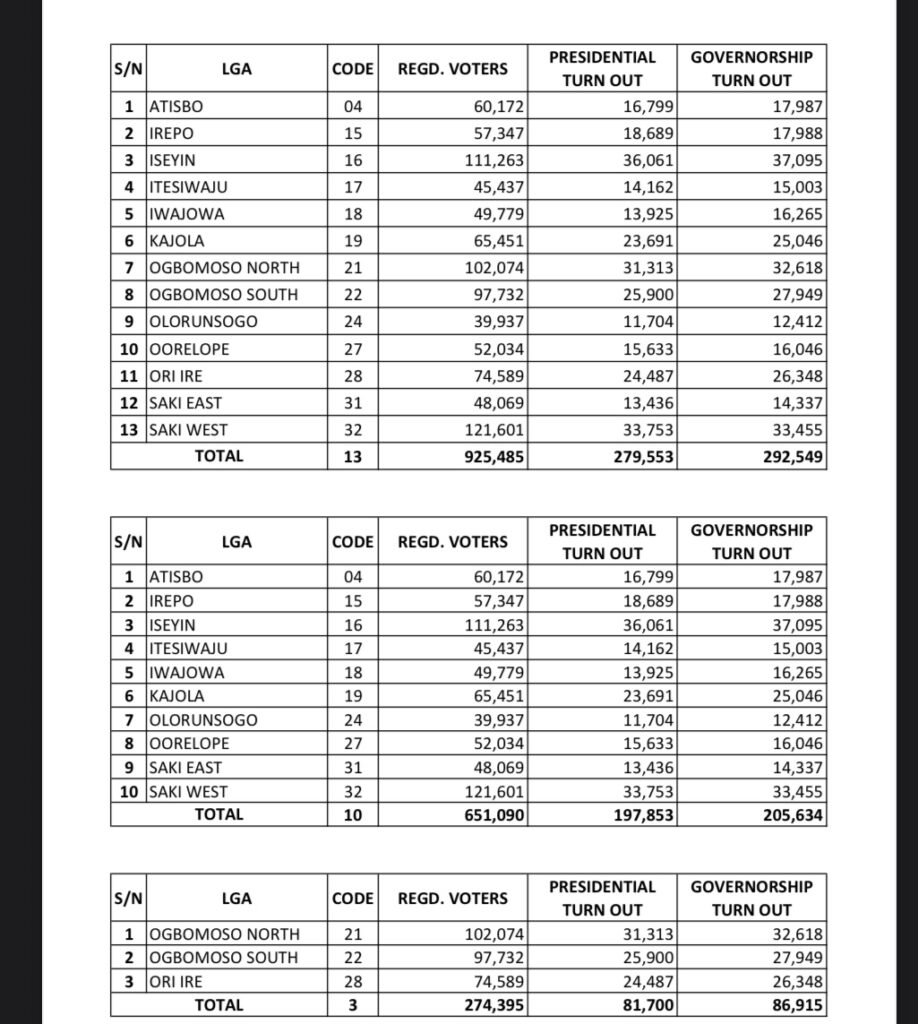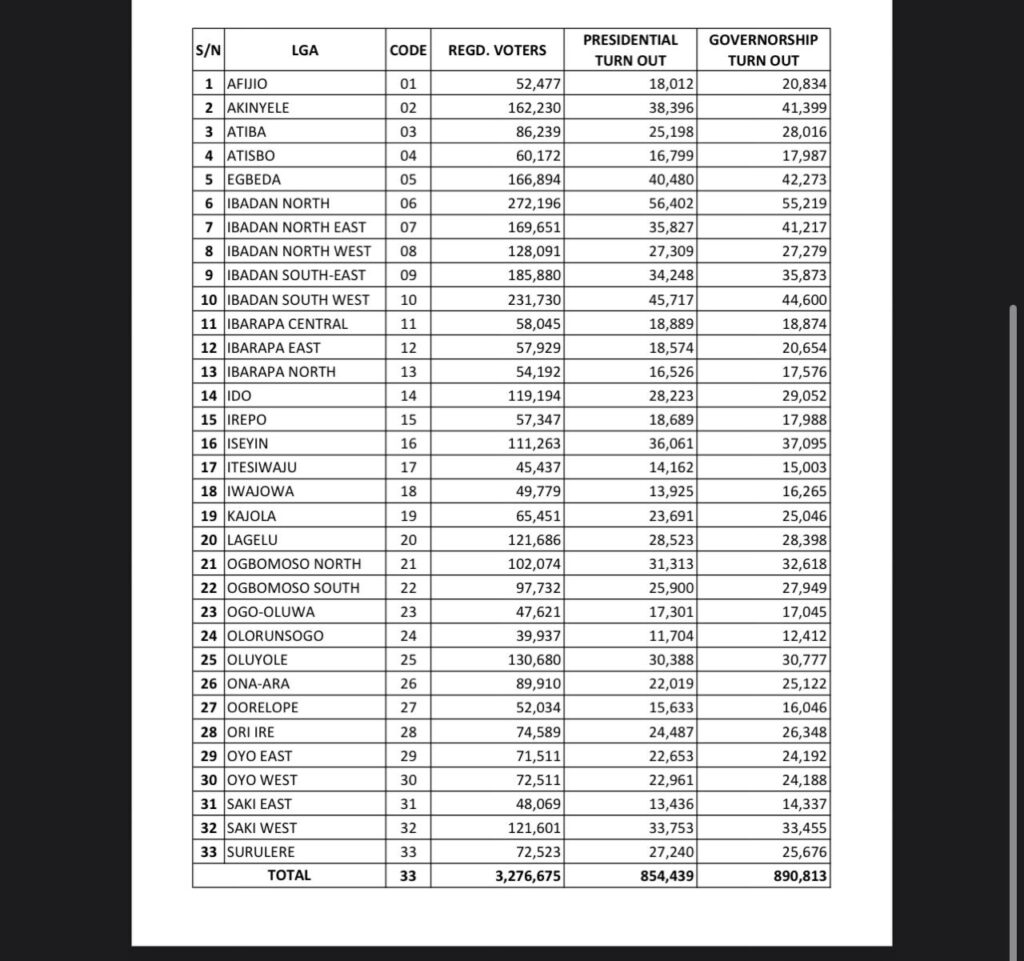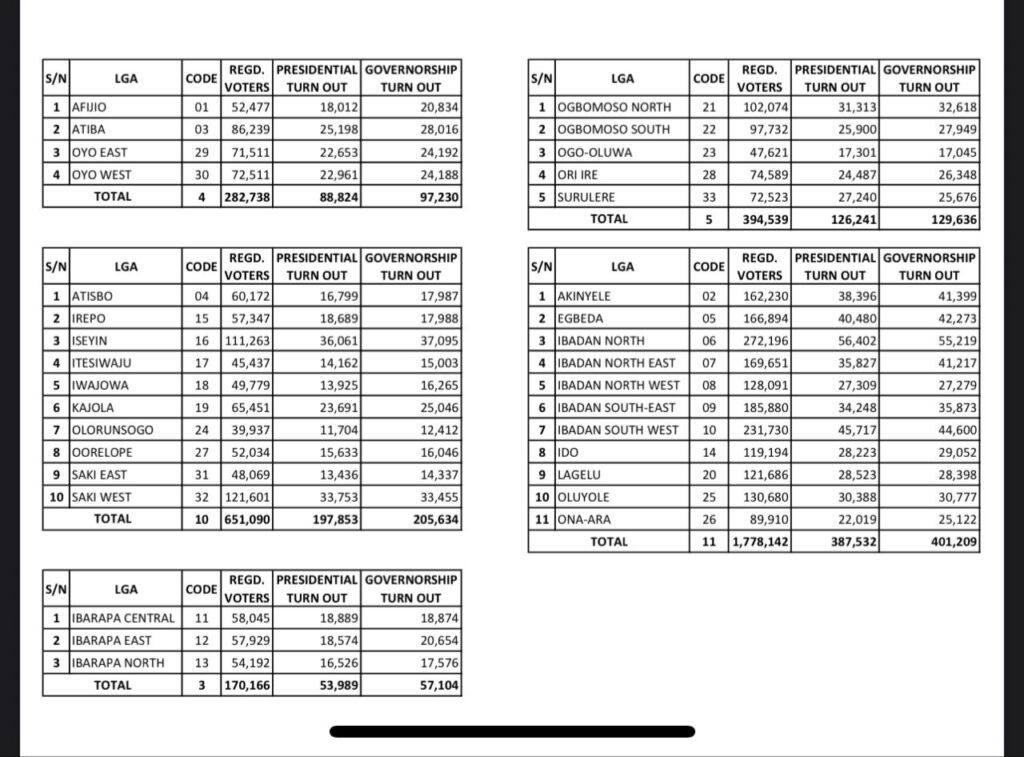Official data shows Ibadan does not constitute 60% of State’s votes

As the 2027 Governorship Election in Oyo State draws closer, political stakeholders from outside the Ibadan zone have intensified efforts to challenge the historical dominance of Ibadan indigenes in the state’s highest office.
Top politicians from Oke-Ogun, Ogbomoso, Oyo, and Ibarapa regions are quietly strategizing, with many of them yet to openly declare their ambitions.
A key part of their plan is to push for power rotation among the three senatorial districts, arguing that the continuous occupation of the seat by Ibadan indigenes has marginalized other regions.

Oyo State is made up of 33 local government areas grouped into three senatorial districts.
However, Ibadan alone—located within the Oyo South Senatorial District—has held the governorship seat for almost three decades.
The Oyo South district comprises nine local governments: Ibadan North, Ibadan North-East, Ibadan North-West, Ibadan South-East, Ibadan South-West, Ibarapa Central, Ibarapa East, Ibarapa North, and Ido.
Historical records show that since Chief Kolapo Ishola governed during the aborted Third Republic between January 2, 1992, and November 17, 1993, only one non-Ibadan indigene has occupied the seat.
That exception is the late Otunba Adebayo Alao-Akala from Ogbomoso, who served a single term.

In contrast, four Ibadan sons have served as governors almost back-to-back: Lam Adesina (1999–2003), Rashidi Ladoja (2003–2007), Abiola Ajimobi (2011–2019), and the incumbent Seyi Makinde, who is expected to complete his second term in 2027.
“For 26 years, Ibadan has held the governorship, except for Alao-Akala’s four years.
The state has continuously failed to embrace power rotation among its senatorial districts,” a stakeholder from the Oke-Ogun axis confided in our reporter.
According to him, Oyo and Benue remain among the few states in Nigeria yet to adopt senatorial rotation of the governorship. “This refusal is counterproductive to inclusive governance and undermines the sense of belonging needed in a diverse state like ours,” he added.
However, insiders believe that the disunity and lack of coordinated efforts among political leaders from the other senatorial zones have also contributed to Ibadan’s prolonged dominance. “If the non-Ibadan zones unite and work together, they have enough voter strength to influence the outcome of the 2027 election,” another source noted.
Contrary to the often-quoted claim that Ibadan alone commands 60% of the state’s voter population, official figures from the 2023 presidential and governorship elections reveal a different story.
Ibadan accounts for 52% of the total votes cast, while Oke-Ogun holds 21%, Ogbomoso 18%, Oyo 6%, and Ibarapa 3%.
These figures suggest that a united front among the other regions could present a viable challenge to Ibadan’s longstanding political dominance and potentially reshape the leadership trajectory of Oyo State in 2027.

